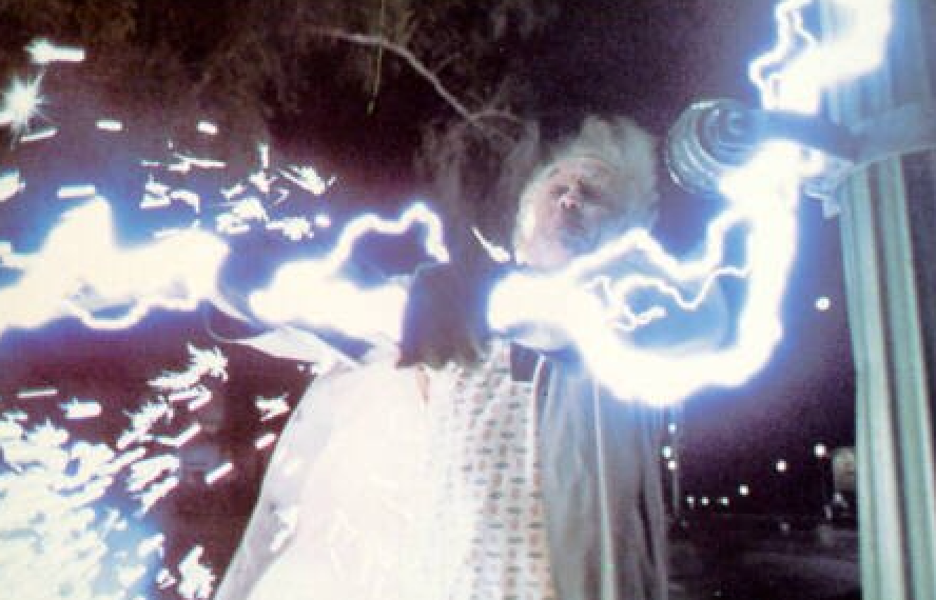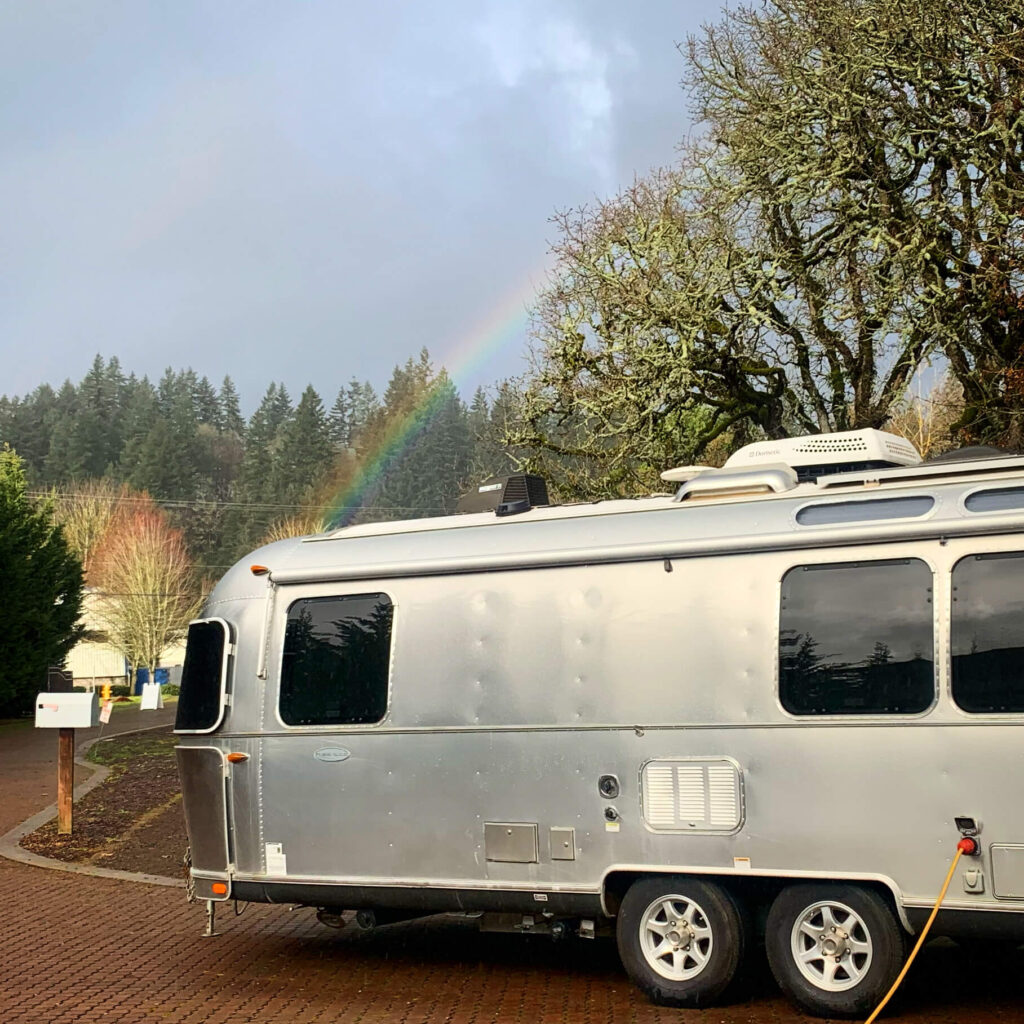Why Cable Size Matters:
If your cables are slightly undersized, your system is inefficient.
If your cables are way undersized, your system might be a fire hazard.
If your cables are oversized, you spent too much money.
The resistance of a cable is proportional to the current flowing through it, the length of the run, and the diameter (gauge) of the conductor. High resistance causes a voltage drop. In extreme cases, that voltage drop is proportional to the amount of power that the cable run has to dissipate in the form of heat. Too much heat leads to melted components and fires.
For example:
“My solar panels are rated to produce up to 30A in parallel, so I’m going to use 10ga wire going to my charge controller.”
Sure, you won’t have a fire, but this is very inefficient.
Approximate Loss 5.3% at 20V, 30A, 30’, 10ga

Having been in the business of guiding do-it-yourself RV installers for two decades, AM Solar has boiled down complex cable sizing calculations into simple rules of thumb that anyone can follow, despite not having Electrical Engineering credentials.
Let’s break this down based on where cables are located in a typical RV power system:
Solar Panel Leads:
The leads coming out of the junction box of a solar panel and going to the connectors are typically 12ga and about 3’ long. This is just how panels are made, and unless you want to cut the leads off, you have no control over this. Solar panels are rated based on what is measured at the ends of these leads. Even though 12ga is relatively skinny compared to other wires in a mobile power system, it is a short run, and only carries the current of a single solar panel.
Typical Loss %: 0% because manufacturers rate panels at the end of these leads.
Solar Panel Leads to the Combiner box:
From the solar panel to the combiner box, you typically see 10ga cable, with leads less than 15’ long. Although 10ga cable is relatively skinny, it is perfectly adequate for carrying the current of up to two solar panels (a parallel connection) for a distance of 15’ to a combiner box. Here are the cables we typically use for this run:
Typical Loss %: 0.5% at 20V, 5A, 15’, 10ga
Combiner Box to Charge Controller and Battery Bank:
This cable run is highly dependent on the wattage of the solar array and the voltage of the battery bank. For simplicity’s sake, we typically use the same size of cable from the combiner box to the charge controller that we use from the charge to the battery bank. In cases where the solar array has an operating voltage more than twice that of the battery bank, you can use a cable that is one size skinner from the combiner box to the charge controller. This total cable run is typically less than 30’ long with the following cable gauge/wattage relationships:
<250W – 10ga
<300W – 8ga
<500W – 6ga
<700W – 4ga
>700W – 2ga
These numbers are based on 12V battery banks. If you are using a 24V battery bank, double the wattage.
Typical Loss %: 1.5% at 20V, 20A, 30’, 6ga
Alternator or Customer Connection Point to Battery Bank:
For this run, we typically supply 35’ of cable in our kits. Unlike the solar charging systems, this cable is a single run, so it has to go not only from the alternator or CCP (consumer connection point) to the battery bank, it also has to go from the battery negative (or the load side of the shunt) to the chassis. The size of this cable depends on the particular system and the associated charging current:
Orion 7-pin, 18A – 8ga
Orion DC/DC, 30A – 6ga
Dual Orion DC/DC, 60A 4ga
Orion XS, 50A – 4ga
Secondary Alternator, 280A – 4/0
These numbers are based on 12V battery banks. If you are using a 24V battery bank, you can use a smaller gauge cable.
Typical Loss %: 2.1% at 14V, 30A, 20’, 6ga
Battery to Battery:
To help keep batteries balanced and allow for high current loads and charging, we use the thickest cable reasonably available. This is 4/0.
Typical Loss %: 0.1% at 14V, 300A, 1’, 4/0
Battery Bank to DC Load Fuse Block:
We typically supply 15’ of cable in our DC Distribution kits. These kits come in a variety of current ratings that all use different cable gauges:
6-Circuit, 60A – 6ga
12-Circuit, 100A – 4ga
12-Circuit High Current, 200A – 2ga
If you use a DC Distribution kit that steps 24V down to 70A of 12V DC, we use 6ga between the battery bank and the Victron Orion converter.
Typical Loss %: 1.7% at 14V, 60A, 8’, 6ga
Battery Bank to Inverter/Charger
For this run, we recommend keeping the distance short because of the high current, less than 5’, but it is possible to go out to 10’. The cable size is proportional to the wattage (or VA) of the inverter.
3000W, 300A surge up to 400A – 4/0
2000W, 200A surge up to 300A – 4/0, but you can get away with 2/0
1200W, 100A surge up to 200A – 2ga
If you have a 24V or 48V battery bank, you can get away with skinnier cables, but we don’t recommend it. These are still high current runs, and there are better ways to save money.
Typical Loss %: 0.7% at 14V, 300A, 5’, 4/0
These recommendations are designed to give you plenty of wiggle room. Yes, in many cases you can get away with skinnier wire, but that will limit future expansion and not save any significant amount of money. If you went thicker on the cables, you might add half a percentage point to the efficiency, but it likely won’t be worth the added cost and hassle associated with routing thicker cables.
If you still want to run your own calculations, or you think we might be wrong, here are some of our favorite online tools:
If you’re still confused, don’t worry. AM Solar sells complete kits with all the properly sized cables, lugs, fuses, breakers, etc. We are happy to do the math for you.



